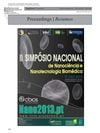TLDR Microparticles help caffeic acid stay longer in hair follicles for better treatment of folliculitis.
The study investigated the delivery of caffeic acid (CA) to hair follicles using O/W-emulsions containing CA-loaded controlled-release microparticles to treat folliculitis. Traditional and differential tape stripping techniques showed that microparticles provided a more homogeneous distribution and higher retention of CA within the stratum corneum and hair follicles compared to free CA. This method allowed for a continuous release of CA, potentially enabling effective treatment with a single dose until the microparticles were naturally removed or depleted.
 69 citations
,
December 2015 in “Journal of Controlled Release”
69 citations
,
December 2015 in “Journal of Controlled Release” Nanocapsules can improve clobetasol delivery to hair follicles, reducing side effects.
 20 citations
,
August 2014 in “Therapeutic delivery”
20 citations
,
August 2014 in “Therapeutic delivery” The transfollicular route shows promise for noninvasive, targeted drug delivery but needs more research.
99 citations
,
April 1998 in “The journal of investigative dermatology/Journal of investigative dermatology” Hair follicles help skin immune recovery after UVB exposure.

Plant-based compounds can improve wound dressings and skin medication delivery.
65 citations
,
March 2022 in “Molecules” Nanocarriers can enhance cosmetics but face regulatory and safety challenges.
 December 2013 in “Biomedical and biopharmaceutical research”
December 2013 in “Biomedical and biopharmaceutical research” Nanotechnology shows promise for better drug delivery and cancer treatment.
20 citations
,
January 2022 in “REVIEWS ON ADVANCED MATERIALS SCIENCE” Nanoparticles can make cosmetics more effective but have challenges like cost and safety.
 16 citations
,
October 2023 in “Molecular cancer”
16 citations
,
October 2023 in “Molecular cancer” New treatments like nanotechnology show promise in improving skin cancer therapy.





